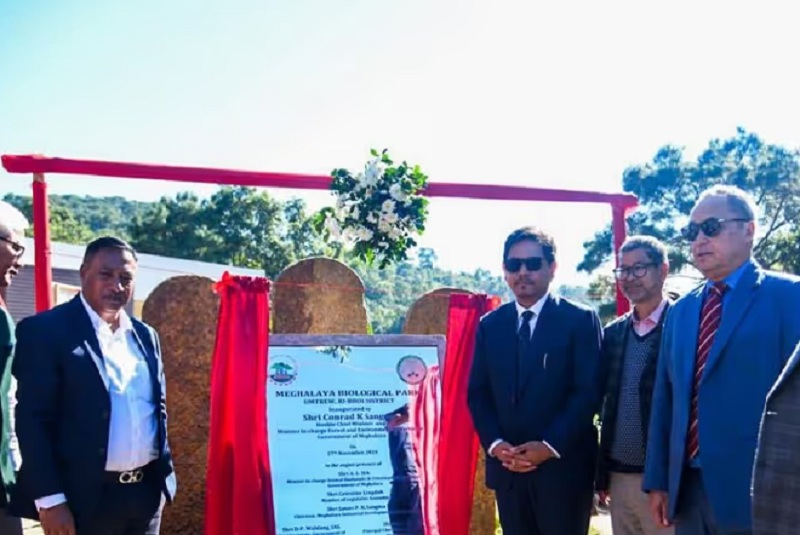Shillong: Chief Minister Conrad K. Sangma on Wednesday inaugurated the first phase of the Meghalaya Biological Park at Umtrew in Ri-Bhoi district.
CM Sangma expressed his pleasure at inaugurating the first phase of the Meghalaya Biological Park, a project that had faced numerous challenges over the past 24 years. He said, “The inauguration of the park is a significant achievement, but there is still much work to be done to make the facility fully functional and vibrant.”
He noted that certain parts of the park, such as ticketing counters, cafeterias, souvenir shops, and animal enclosures, are still under construction.
“This Biological Park can serve as a place not only for amusement and recreation but also as a platform for environmental education, especially for the youth to sensitize them about the importance of environmental conservation and wildlife protection,” he said.
Sangma pointed out that the park is a refuge for animals that have been rescued or cannot be returned to their natural habitats.
Sangma also stressed the importance of data collection, surveys, and research on the state’s flora and fauna to aid in conservation efforts.
He called for regular surveys and a database to monitor the state’s flora and fauna. He said, “Having a survey and a database using technology on the flora and fauna of the state will help conserve and protect environment and wildlife efficiently.”
Some animals previously housed at the Lady Hydari Park in the city have been relocated to the new enclosures at Umtrew.
The project was launched in 2001 with the acquisition of a 72-hectare land plot. Although it received grants in 2005, the project was plagued by delays attributed to mismanagement by the State Forest and Environment Department. However, the project, estimated to cost around Rs 35 crore, gained significant momentum in 2019 when CM Sangma laid the foundation stone.
ALSO READ: Meghalaya board releases class 10 exam 2025 datesheet
Sangma stressed the importance of human-animal coexistence and also outlined plans to incentivize local communities in critical areas to promote coexistence while capitalizing on eco-tourism opportunities.















